California Game Wardens
The First 165+ Years of
Fish and Game Warden History
1849. California Territorial Legislature adopts common law of England as the rule in all state courts. Before this, Spanish and then Mexican laws applied. Most significant legal incident was the Mexican government decree in 1830 that California “mountain men” were illegally hunting and fishing. Captain John Sutter, among others, had been responsible for enforcing Mexican fish and game laws.
1851. State of California enacts first law specifically dealing with fish and game matters. Prior to the establishment of the Board of Fish Commissioners (Commission) the Legislature had passed several laws protecting fish and wildlife in CA. These laws were incorporated into the general body of penal statutes which were enforced by local Sheriff’s and/or Constables. The first law concerned the right to take oysters and the protection of property rights of persons planting oysters.
1852. On May 1, 1852 the Legislature enacted the first law pertaining to game, creating a season for elk, antelope, deer, quail, mallard and wood ducks. The law made the commercial sale of certain species illegal and imposed fines. The law applied to the counties of Monterey, Santa Cruz, Santa Clara, San Francisco, Contra Costa, San Joaquin, Sacramento, Yolo, Solano, Napa, Sonoma, and Marin.
Also passed was the first law protecting salmon runs. Enforcement was the responsibility of local authorities.
1854. Game laws are extended to all counties in the state.
1860. The beginning of statewide control. First license act provides that no Chinese or Mongolian could take fish in state waters without a four-dollar monthly license. Collectors of fees were appointed by the governor.
1861. Closed seasons for trout are established.
1869. Lake Merritt (City of Oakland) is made the first state game refuge, believed to be the first in the country.
1870. The Board of Fish Commissioners, forerunner of the Fish and Game Commission, is established “to provide for the restoration and preservation” of fish in California waters. This was the first wildlife conservation agency in the country, even predating the U.S. Commission of Fish and Fisheries. California’s three “fish commissioners,” appointed by the Governor, received no compensation, but the Legislature appropriated $5,000 to the board for the first two years’ operations. Messrs. B. B. Redding, S. R. Throckmorton and J. D. Farwell were appointed as commissioners who served the state for more than 10 years.
Introduction Report of the Board of Fish Commissioners, 1870-1871: “When it is further understood that the members of the Board neither receive nor expect compensation for their services other than the satisfaction of doing something towards the preservation of the fish now in our waters and adding to the food supply of the people by the introduction of new varieties, …”
“If a few men of intelligence, living on the banks of each bay, river, and lake, will inform themselves, of what has been done in other States and countries for the propagation and preservation of fish, they will create a public opinion that will cause the enactment of proper laws and compel their enforcement. . . .”
“The most important means for the preservation of the fish now in our rivers is in the construction of fish ladders over all dams otherwise impassable. . . .”
“The law, so far as it relates to fish ladders, appears to operate satisfactorily. Thus far all mill owners on the Truckee and its tributaries, whose dams obstruct the passage of fish, have, with one exception, constructed fish ways. The Commissioners have furnished many mill owners with plans for the construction of fish ways. From our experience during the past two years, it would seem that as a rule the mill owners, with but few exceptions, are a body of intelligent men, who only require to have made clear to them the fact that the construction of fish ways does not interfere with their business, while it adds to the public good, to induce them to place fish ways over their dams.”
1871. The state appointed the first Game Wardens to handle wildlife law enforcement, making the Enforcement Division of the Department of Fish and Game the very first State Law Enforcement Agency enacted in California. Over the next thirty years, the Board of Fish Commissioners were given authority over game, as well as establishing hunting and fishing licensing. The two full-time deputies (wardens) are appointed to patrol San Francisco Bay and the Lake Tahoe area. Report of Fisheries Commissioners: 1870 – 1871 – pg 15: . . . we deemed it advisable to employ two assistants- the first, Captain E. Wakeman, to examine and report on the fisheries of the Bay of San Francisco and some of the rivers that discharge their “waters directly into the Pacific Ocean; the other, Mr. George C. Haswell, to examine and report upon the fisheries of Lake Tahoe and the Truckee River and its tributaries.
As deputies of the Commission Wakeman and Haswell were authorized to inspect fish camps, examine catch and gear, educate fishermen of the existence and extent of the laws, issue warnings for violations, and develop contacts with the public who might inform them of future violations. It appears that the deputies also investigated reports of violations but there is no record in the Reports of them being expected to make, making, having the authority to make, or causing any arrests to be made.
Any arrests made for violations of the laws protecting fish during this period were most likely accomplished by a local Constable acting on information supplied by Wakeman and Haswell. It appears possible from their statement of expenditures in the Report that the Commission at times paid the Constables for their time in making arrests and possibly for time spent in court. It also appears they may have paid private attorneys for certain services including prosecution of violations, but the specific nature of those services is not further explained in the Report.
Captain Wakemen reported that visited many fish camps in compliance with his commission and observed many practices of fish being wasted. He reports that in all cases he caused the fish to be returned to the water.
Ibid pg 16: In some cases nothing but crabs are taken, which destroy the nets and irritate the men so that they are inclined to leave them on the beach to die; but I have had, in all cases, everything that was not marketable put back into the water.
He informed those he contacted about the requirements of the law and the possibility of arrest for violations. He took notes of names and boat numbers of fishermen he contacted; received reports from the public of destructive acts they had witnessed, and provided information for contacting him if further they observed violations in the future. All of this activity is normal practices of an enforcement officer but there is no mention of him personally arresting anyone. He reports those responsible should be arrested before more serious damage is done to the fisheries. He does not indicate he plans to or is able to make the arrests.
Ibid pg 19: I am informed from a reliable source that a most wanton course of destruction is practiced by the settlers along the Sacramento and San Joaquin Rivers, which will, if not arrested, be attended with vital consequences, amounting to a total destruction in these waters of our salmon fisheries, which, to the State, are worth millions of dollars. He also reports of serious pollution in Pescadero Creek by sawdust from years of lumber mill operations. He indicates the public below the mill has resolved to use all the legal means possible to prevent further destruction of the steam and its fish. Capt. Wakemen states if there are laws prevent this they should be enforced.
Mr. George Haswell conducted a similar examination of the streams in the Lake Tahoe area. He reports receiving information regarding serious violations of taking and selling fish illegally. He contacted the persons responsible, informs them of the law and forbids them to continue. He does not indicate in any way that he personally will conduct an investigation or arrest them. Instead he states that the local citizens must see that the officers of the law and the Courts must do the job. He refers to officers in the 3rd person and does not imply that he too is an officer.
Ibid pgs 22-23: I notified these men of the provisions of the law, and forbid the farther use of either seine, net, or trap at any season of the year, or for any purpose whatever. They promised obedience, and the residents of the vicinity said that they would take care that the law was complied with, and in the event of any violation the parties should be prosecuted with the greatest rigor to the utmost extent of the law.
I believe that I have nothing to add, except to say that during the coming year and until people begin to understand the law, and the officers and Courts enforce it, the entire time of at least one man will be required about Lake Tahoe, the Truckee, Little Truckee, and the lakes and streams that flow into them, for the protection of fish.”
Finally, the Commission reports that it paid the expenses for both Wakeman and Haswell to conduct their examinations. Although the Commissioners are authorized to hire people to assist them here is no information in the report that either man was employed by or received a salary from the Commission for their service. The Commissioners did not have authority to authorize their employees to make arrests.
Ibid pg 24: Feb, 9, 1871 – Paid expenses of E. Wakeman, examinations Bay of San Francisco – $238.60 March 27 – Paid expenses of E. Wakeman, coast rivers $80.00 Nov 25, 1871 – Paid expenses of G. C. Haswell, examination of Lake Tahoe, Truckee river, and tributaries. $175.00
1872. The Legislature organized the various laws into separate “Codes”. Fish and game related laws were included under Miscellaneous Crimes in sections 626 – 637 of the Penal Code. The duties of the Commissioners were placed in section 642 of the Political Code (The provisions within the Political Code later were moved into the Government Code in 1943 when it was established.). The Legislature passes an act enabling the commission to require fishways or “in-lieu” hatcheries where dams or other obstacles impede or prevent fish passage.
1873. In order to ascertain how well the laws were being obeyed they hired two men in 1870 to examine and report to them the status of the fisheries in and around S.F. Bay, Lake Tahoe, and the Truckee River. There is nothing in the reports by these first two “assistants” to indicate they were authorized to make arrests for violations. It strongly implies that they were only “deputized” by the Commission is the sense that they were employed by and authorized to act for the Commission. The law establishing the Commission provides no authority to neither enforce the laws nor employ persons who could.
An item in their report of expenses shows that on July 14, 1873, J. Woodbury was paid $104.50 for services enforcing the salmon laws. No entries were found to indicate the nature of Woodbury’s service. It is reasonable based on other entries in the various Biennial Reports that people who were not employees were paid for providing legal assistance, transportation, appearing as a witness, miscellaneous cost related to arrests, etc. related to prosecuting violations of the fish laws.
Pgs 13-14: The most in importance is the means for preventing the destruction of the fish we already have. The (Commission find it almost impossible to prevail upon the people to refrain from destroying fish in the localities where they abound. It seems as if human invention is taxed to its utmost in the desire for wholesale destruction, and the reluctance which men feel to complain of their neighbors, renders it almost impossible to enforce the laws in such cases. If the Legislature should see fit to make an appropriation sufficient to allow the Commissioners to employ, at times, a proper person to look after such violations of the fish laws and see to their enforcement, we think this evil could readily be suppressed, as the people at large show a great interest in having the law enforced, but no one is willing to make himself obnoxious by being an informer. All this would be cured by placing the means of remedy in the hands of the Commission. The Commission already has the power to do this, and has done it with most hopeful results, so far as their limited means have allowed.
July 14, 1873 – Paid J. Woodbury for services enforcing the salmon laws – $104.50
In their Report of 1874-1875 the Commissioners once again state that enforcement of the laws is not especially their duty. Instead, they repeat that duty lies with the citizenry who observe violations to report them to the to the District Attorney directly and not rely on the Commission (or its employees) to report the violation. This strongly indicates that the men hired by the Commission to look after violations and see to their enforcement were most likely at most paid watchmen. And, regarding the pay, it seems the Commission thought the expense for prosecutions was not the best use of their funds as evidenced by the following excerpts from the Repots:
1874-1875, pg 14: The duties of your Commissioners involve a vast amount of correspondence especially with people who see some violation of the laws for the preservation of fish. We desire to call attention to the fact that it is not, especially, the duty of the Fish Commissioners to see the laws observed, but it is also the duty of every citizen; and if, when persons see a violation of the law, they will notify the District Attorney of the county, giving him the information and the facts, and informing him where the witnesses can be found, he will prosecute without waiting for a request from the Commissioners.
Report for 1875-1876 on pages 18-22: There is a prevalent opinion throughout the State, that it is the especial duty of the Fish Commissioners to act as local police in each neighborhood and prevent violations of the law in relation to fishing during the close season. Much time is consumed in answering questions on this subject, and informing correspondents by letter that it is the duty of every citizen to see that the law is obeyed.
We learned that the canning establishment of Messrs. Emerson Corville & Co., at Collinsville, only made a pretense of ceasing work on the first of August, and that they secretly persisted in violating the law. We caused them to be arrested and fined, upon which they quit work and promised hereafter to obey the law.
If the Commissioners are to expend the appropriation in prosecuting violations of the law there will be no money to pay for the hatching of additional fish.
1877. The Legislature expanded the duties and authority of the Fish Commissioners by adding the following amendment to Political Code section 642: It is the duty of the Fish Commissioners: 1) To see that the laws for the preservation of fish and game are strictly enforced; and for that purpose they may from time to time employ such assistants as they shall deem necessary, which persons so appointed as assistants shall have all powers and authority of Sheriffs to make arrests for violation of such laws throughout the State. 2) To provide for the distribution and protection of game birds imported into this State for purposes of propagation.
I have found no record in the Reports that the Commissioners took any action to appoint such assistants.
The Commissioners did state that it was a necessity that there be sufficient laws to protect the fish and that those laws be actively enforced. But, they made it clear that it was not their task to enforce laws themselves. Instead the Reports show that they limited their efforts to developing hatcheries, stocking streams, and making recommendations for new laws to protect fish and game. In 1881 they state in their Report that while establishing a police force was advocated by many in the public that it would be too expensive and a waste of their limited funds.
The Commissioners believed that the best protection and means of insuring the continued runs of fish in the rivers was to ensure that streams blocked by dams constructed by lumber mills and miners were removed or ladders constructed to provide access around them.
1878. The jurisdiction of Board of Fish Commissioners (BOFC) was extended to include the protection of game animals when statues were enacted by the California legislature setting some closed seasons and regulating hunting methods. Although wildlife laws were passed, the Commission lacked money and personnel to actively enforce them.
1879. Striped bass are introduced from New Jersey and planted at Carquinez Strait.
1880. The trapping of quail, partridge, and grouse was prohibited by the Legislature. Report from the Fish Commission. Pg 7-8 H. D. Dunn Report – During the close season, between August 1, and September 15, the law was openly violated by the fishermen, who defied arrest and conviction for the offenses. The few persons who were arrested were taken to Suisun City, Solano County, where no conviction could be had, it being stated that public opinion there was adverse to the law. That the close season was openly and persistently violated by the fishermen on the Sacramento and San Joaquin Rivers was a matter of notoriety, and parties, well informed, stated that the number of salmon taken, in violation of law, and salted and smoked, was in excess of those supplied to the canneries and city markets, during the legal season.
1881. Section 636 in the Penal Code was amended to provide authority for peace officers of the county, or assistant, or persons acting under the Fish Commissioner’s to seize nets, boats, tackle, etc. being used illegally, sell them at auction and keep half the proceeds.
1882. As reported in their bienneal report 1881-1882 – P4 “It has been frequently suggested to the Commissioners, that they ask the Legislature for an additional appropriation for the establishment of a “patrol police,” to enforce the laws as against these desultory depredations. We cannot see the expediency of such an extravagance, for extravagance it would be. It would cost more to keep it up than any possible benefits derived from it. There is no actual necessity for large expenditure by this Commission, and the simpler and more economically it is conducted, the better will the State be served.”
1883. Commissioners establish a Bureau of Patrol and Law Enforcement.
On August 1, 1883 the new Commissioners acted on their authority and hired W.C. Jones as a Deputy Commissioner(aka the first Chief of Patrol), to patrol the rivers and make arrests. The original Commissioners were retired or had passed by 1882 and new Commissioners, A.B. Dibble and R.H. Buckingham were put in place that year. This is discussed in the 1883-1884 report. Pg 12-13– Notes By The Commissioners — We would also respectfully state that when the present Commissioners were appointed they were at a loss to know where to commence, as the head of the old Commission, Hon. B. B. Redding, died a few months before, and the only one left was the Hon. S. R. Throckmorton, who was at the time in very poor health; and he also died in a month or so after our appointment, leaving us without any one to confer with who had any knowledge of what was to be done or where to commence. We entered upon our duty as strangers to the business, and it may have cost more to carry on the needed work than it did our predecessors, but when taking into consideration the amount of work done by the present Commission, we confidently believe that the people of this State will approve of our action and. endeavors to secure and advance its fish industry.
The first clear record in the Report of Commission employees being authorized to make arrests for violation appears in 1883-1884. Prior to that time the record is unclear but, seems to indicate that persons hired by the Commission to patrol the rivers only acted to educate witness and report violations.
1884. Report of the Fish Commissioners 1883-1884 on Pg 3-4 The Violators of the Law. The Commissioners have exercised their power to abate the evil of illicit fishing, but owing to the limited means at their command, they have been unable to do all that was required to be done. There has been in that direction a great amount of work performed, in different parts of the State, the most of which was done on the lower Sacramento and San Joaquin Rivers, and the bays of Suisun, San Pablo, and San Francisco.
During the close season of 1883 the Commission placed a patrol upon the rivers and bays, which has had a very wholesome effect. Mr. W. C. Jones, the Deputy Commissioner, had charge of the patrolmen employed, and did good service, as his annexed report shows. The present Commission has used considerable exertion against the violators of the fish laws, but unless some stringent legislation is obtained, our streams and bays will soon be without a needful supply of salmon and other fish.
Pg 13-14 VIOLATIONS OF LAWS. The fish laws have been violated to a great extent on the upper rivers, by unprincipled men, who have established fisheries from Fremont to Redding, on the Sacramento River. The great damage that has been done by these up-river fishermen has been occasioned by the continued drawing of seines upon the gravel bars, not only in the taking of the fish ready to deposit spawn, but also in destroying the ova already deposited upon the gravel bars, these bars being the natural spawning grounds of the salmon. In the opinion of the Commissioners, the State should set apart that section of the river from Jacinto to the McCloud and Pit Rivers as breeding grounds, so that no net or seine could be legally used in that portion of the river. If a law of that character is not passed and enforced, the salmon interest of this State will be of short duration, as the parties using seines on the spawning grounds do more towards annihilating the salmon than all the gill-net fishermen, as the gill nets are nearly of a uniform size of mesh, and only take matured fish, while the seines take all sizes, from one half pound up. In the opinion of the Commission, it would be wise for the Legislature to enact such laws as will control excessive and prohibit destructive modes of fishing, such as Chinese bag nets, Chinese trout lines, etc., as they are destructive to the young of all kinds of fish. The Commission would advise that a law be passed to prohibit the use of any weir, pound, bag net, China trout line, set nets, and all other contrivances, in the public waters of this State, with the exception of the fyke nets, and providing that the wings thereof do not extend more than twenty-five feet in the stream from the bank or shore; also, to enact such laws as will prohibit the Indians from taking any kind of fish by any other method than was in use by them prior to 1850.
Pg 17 CLOSE SEASON. On the first day of August, 1883, the Commission placed a patrol upon the Sacramento River and adjacent bays, under the direction of W. C. Jones, as Deputy Commissioner. The arrangements for the patrol were completed by the ninth of the month, when the first sortie was made and several parties were arrested for illicit fishing. From the ninth of August, the patrol was kept in the field. In fact, the pirates and violators of the law seemed to forget that there ever was a law passed for the protection of salmon. It was a hard matter to make them believe that the Commissioners were in earnest. Deputy Commissioner Jones at times was compelled to resort to force in order to prevent parties from further violating the laws. In the opinion of the State Commission, Mr. Jones has succeeded, by his energy and intrepidity, in stopping almost all of the lawless and wanton destruction of salmon, especially during the close season of 1883.
During the close season of 1884, viz. : the month of August, there was but little illicit fishing done, except in the last few days of the month, when a few boats ventured out, and those were captured by our deputy, W. C. Jones. One of the greatest drawbacks to successful work is, the want of a proper conveyance to patrol the rivers, and at all times; sailboats are not always successful in making captures, on account of the fishermen having fast crafts of their own and, as soon as the Commission’s boat is discovered, they escape. This is owing to the fact that the most of their boats are superior sailors. The Commissioners need a good steam launch, with a light draft of water, having speed sufficient to overtake and bring the violators to justice.
1885. First compilation of California fish and game laws is published . . . The first fish and game marine patrol is instituted with the placing in operation of the 46-foot patrol boat Governor Stoneman.
Pg14 – STEAM LAUNCH. An Act of the Legislature to authorize the Board of Fish Commissioners to construct a steam launch to aid in carrying out the purpose of said Board, passed in March, 1885. The sum of $4,000 was appropriated. In April, 1885, a contract was entered into with John W. Rock, Esq., of Sacramento, an experienced boat builder, for the construction of the steamer at the cost of $4,000. The plans and specifications called for a boat forty-six feet long, twelve feet breadth of beam, and six feet depth of hold, with a boiler of the best American iron, six feet long, five feet in diameter, with return flues. The engine [is] a ten by ten cylinder, propeller shaft [that is] three and one half inches in diameter, with a forty-six inch propeller. The boat was completed on the twentieth day of August, 1885, and immediately put into patrol service. The necessity for the craft was considered and passed upon by the Legislature, and the State is now the owner. The “Governor Stoneman” is staunch and swift (having made twenty miles in an hour and ten minutes) and has already done and will hereafter do most excellent protective and patrol work.
1886. Report from the Fish Commission 1885- 1886. The Commission will use its police power to remedy the evil, and to enforce obedience to our fish laws. Pg 13 PATROL AND PROTECTION. The present Commissioners on coming into office were alarmed at the excessive decrease in the salmon take and at the small catch of some other varieties of fish. Ascertaining that the diminution was largely owing to violation of the fish laws of the State, by Chinese and others, the Commissioners determined to employ upon bays and rivers a strong and active patrol police. We were compelled to do this, or to permit the laws of the State to be violated and our waters and citizens robbed. The Commissioners also believed it to be a vain work to stock waters for the mere gain of vandals and foreign exportation. The patrol system was inaugurated in the Fall of 1883, and up to the present time has done much excellent work. Chief W. C. Jones in one of his reports favorably says of it, “The best evidence I have to offer in the interest of the good accomplished by the river patrol is the small amount of violations now being committed of the existing fish laws. It is a well known fact that prior to the establishment of an efficient patrol on the rivers and bays, fishermen carried on their unlawful business without restraint. “As to the necessity and efficiency of the patrol, no better or more convincing statement is required than to refer to the number of arrests and convictions that have resulted from the first day of August, 1883, to October 1, 1884.
That branch of the police service under Chief Jones, arrested, and in nearly all cases, convicted, one hundred and seventy-five criminal offenders. From these, fines in the sum of $2,000 were collected, and under the law, mostly distributed to informers and District Attorneys. In 1885-86, over six hundred were arrested and about four hundred and fifty convicted. During the present year, between April seventh and September eighteenth, Chief J. H. Harten arrested seventy. Many were convicted, fined, or in default of payment, jailed. Whilst these law violations and wrongs have been known to all, their magnitude has been realized by but few. The expense of this service, although it has been heavy, is a trifle in comparison with the beneficial results secured. The work should be kept up and strengthened.
1887. JH Hartin appointed Chief of Patrol. Market fishing boats and crews are licensed. Under an Act of the Legislature, approved March 21, 1887, all persons engaged in the vocation of fishing were required to take out a license. The licenses and classes were arranged as follows: Class A (less than three men using one boat), $5 00; Class B (three men), $7 50; and for each additional man, $2 50. The receipts from licenses for the thirty-eighth fiscal year amounted to $2,100; and for the thirty-ninth fiscal year, $2,708 70. We have met with many difficulties in our efforts to enforce this license tax. The fact that no penalty is provided by the Act for failing to take out the required license, has led to the release of some offenders by Justices of the Peace, who held that no punishment could be inflicted upon those who refuse or neglect to obey the law. This, in spite of the fact that a penalty is provided by Section 435 of the Penal Code.
1888. J.W. Willage appointed Chief of Patrol. Report from Fish Commission: Pg 5 STEAM LAUNCH. The steam launch “Governor Stoneman,” constructed at a cost of over $4,000, has been found useless for the service for which it was intended. We have, in the interest of economy and an efficient service, laid it up, and used in its stead for patrol purposes a sloop rented and operated for a sum much less than the cost of running the launch. The main objection to the launch is that its approach can be discerned by those engaged in illegal fishing, at such distances as to enable them to escape detection in their criminal acts. We recommend that the “Governor Stoneman ” be disposed of, as it is a bill of expense to the Commission.
1889. The commission is authorized to import game birds.
1891. Thomas Tunstead appointed as Chief of Patrol. John P Babcock and F.M. Bacigalupi appointed as his deputies.
Due to a lack of funding by the Legislature, Deputy Commissioners continued to be restricted to the prevention of the illegal sale of fish and game in the markets of San Francisco; fishing illegally in San Francisco Bay and in the Sacramento River; pollution of the state’s rivers and streams; and requiring construction and maintenance of fish ladders.
Pg 6-7 THE PATROL DEPARTMENT. It is impossible, with the small appropriation allowed us for this department, to properly carry out that portion of the law which makes it the duty of the Commission to protect and preserve the fish and game in this State. It is hardly necessary to give any reasons for this, for they must be apparent to every one who will give the matter one moment’s thought. If we undertook to patrol the State in detail, the actual traveling expenses of the deputies alone would exhaust the fund. Appreciating this, the Commission has devoted almost its entire attention to what it conceived would produce the best results, namely:
First – The prevention from sale in the markets of San Francisco of fish and game at the time when it is unlawful to sell the same. Second – The prevention of illegal fishing in the bay of San Francisco, especially in the catching of the young of fish. Third -The prevention of illegal fishing in the Sacramento River. Fourth -The prevention of dumping sawdust and other deleterious substances into the various rivers and streams of the State. Fifth – The requiring of the construction and maintenance of fish ladders.
What we have been able to accomplish in this direction will be shown in detail by the reports of our deputies and excerpts therefrom, which are attached to and made a part of this biennial report. It requires a particular fitness to be a competent deputy in this department. The patrolmen are called upon to undergo all kinds of hardships, to be exposed to wet weather at all times of the day and night, and to come in contact with some of the most brutal and irresponsible classes of men. The position demands shrewdness, bravery, and executive ability of high order, besides a thorough familiarity with the topography of our State. In order to properly fulfill the work of this department and to employ a sufficient number of competent men, there should be an annual appropriation of at least $20,000, to be used entirely in this division of the labors of the Commission. Besides the patrol work and arrest of violators of the fish and game laws, there follows an immense amount of labor in the trial and conviction of the offenders. The deputies making the arrest have to be present at the trial. This, coupled with the customary delays of legal procedure, demands a great deal of time, and often prevents our employees from doing important service in other directions. Only by a sufficient appropriation can the Commissioners hope to even partially fulfill the duties which are prescribed to them in this behalf under the law.
The exclusive attention of our deputies has been given to the Patrol Department ever since their appointment. We beg to express to you our satisfaction in what has been accomplished in this matter of the prevention of the sale of fish and game in the markets, and especially with the results which has been accomplished in the prevention of the dumping of sawdust into the Sacramento, Truckee, and other rivers and streams, and also in the establishment and maintenance of fish ladders in the Truckee River and other places. Our most difficult labor has been found in the neighborhood of the bay of San Francisco, and in the Sacramento River. We believe that we have accomplished all that our funds would permit us to do. Your attention is called to the fact that the shore line of the bay and the Sacramento River alone covers a distance of more than two hundred and fifty miles. The fishing business is carried on and conducted at all points on the Sacramento River, from the city of Sacramento to the mouth of the river, and all points on the bay. As above suggested, the sum of $5,000 is absolutely inadequate, if devoted exclusively to this department, to accomplish much active results. The sum of $20,000 would permit the Commission to not merely threaten the arrest of the violators
of the fish laws by infrequent visits, but, on the contrary, to accomplish their arrest and conviction in every instance.
1892. John P. Babcock appointed as Chief of Patrol.
Jack London, soon to be a famous author, reportedly joins the California Fish Patrol in Benicia as a deputy patrolman, although his name did not show up on the roster as one of the unpaid deputy patrolmen below.
According to the websites that trace the history of Jack London, http://www.getyourwordsworth.com/jacklondonchronology.html and http://www.online-literature.com/london/ Jack London was in fact his pen name; his real name was John “Jack” Griffith Chaney. That name does not show up on the roster below either. So, did he really work as a deputy patrolman or not? )
DIRECTORY OF DEPUTY PATROLMEN,
STATE BOARD OF FISH COMMISSIONERS, WHO SERVED WITHOUT PAY
|
William Lindsey –Belmont. |
A. W. Scott — San Francisco. |
Report from Chief Thomas Tunstead. At Wardell Creek we made the acquaintance of a former deputy. He reported that he had made a number of arrests in his district while he was connected with the Board, and had prosecuted the cases. Afterwards his store and barns were burned down, and he said that he then resigned from the Commission.
1893. In the fall, the Legislature appropriated $27,500 to BOFC. This increase in the biannual appropriation allowed BOFC to maintain a thorough enforcement patrol along the Sacramento River stretching from San Francisco Bay to Redding in Shasta County.
1894. For the first time deputies were sent to patrol the trout streams of Monterey, Santa Cruz, Santa Clara, San Mateo and Sonoma counties in the spring of the year. The County Supervisors had passed ordinances regulating the take of trout in this area of the state.
1895. The Legislature prohibited the transportation of game out of the state and the killing of certain non-game birds for millinery purposes.
1896. The County Boards of Supervisors were authorized by the State Legislature to appoint individuals to serve as Fish and Game wardens for each county. The appointed Game Wardens were to enforce the state, county, and municipal ordinances relating to the protection of fish and game and were invested with all of the powers of a peace officer. County Game Wardens were paid from $50 to $75 depending on the class (population size) of the county they worked in. This program was expanded in 1899 to include individuals appointed by a superior court judge or a County Game Warden. These men were paid a fee of $25 for each arrest.
1897. The forefather of the present marine patrol fleet was the “Quinnat I”, a 40 – foot gasoline launch with a 20 horsepower motor and capable of developing 8 miles per hour. The “Quinnat I” was launched in San Francisco in August of that year for river and bay patrol.
1900. Efforts were made by the fish and game dealers of San Francisco to restrain the Fish Commissioners and their deputies from performing their duty in enforcing the fish and game laws. The constitutionality of the fish and game laws were upheld by the courts. The courts declared, “Wild game of the state belongs to the people, in their collective sovereign capacity and is not subject to private ownership except in so far as the people may elect to make it so, and that they may if they see fit, absolutely prohibit the killing of it, or traffic or commerce in it.”
The Legislature appropriated $7,500 per year for game protection. Coupled with the money received from fines imposed upon fish and game law violators and the sale of commercial fishing licenses, the Fish Commissioners were able to maintain 10 regular salaried deputies and a few volunteer deputies. Toward the end of 1900, the Deputy Commissioner force stood at 50.
1901. Charles A. Vogelsang appointed Chief of Patrol.
After the turn of the century, the administration of fish and game laws was strengthened and expanded. The sale of deer meat and hides, quail and certain shore birds was prohibited and a daily and season bag limit adopted as follows: duck and doves, 50 per day; quail and Wilson snipe, 25 per day; and three male deer per season. Night shooting was also prohibited.
1905. A daily creel limit of 50 trout was adopted and swans and all shorebirds were protected.
1907. The California Legislature passed the Hunting License Act. The money derived from the sale of hunting licenses was used for the payment of salaries to Deputy Commissioners directly engaged in enforcement. BOFC recommended a $1 hunting license fee, noting that such a plan was already in operation in 16 other states and four provinces of Canada. A non-resident of the State was charged $10. The fee for a non-citizen of the United States was $25. The new hunting license fee brought in $118, 245 in the first year. This money was credited to the Fish and Game Preservation Fund and exceeded the total appropriations for all preceding years of the Commissions existence. The Commission, which had been fish oriented since its creation, now found 80 percent of its revenues earmarked for game activities. The Deputy Commissioner force stood at 73 by year’s end.
1908. A second Fish and Game office was opened in Los Angeles to better serve the sporting public. BOFC now had offices in San Francisco and Los Angeles.
1908 Hunting Licence
1909. A third office was opened in Fresno to serve the central valley region. The use of animal blinds for taking waterfowl was prohibited. The daily bag limit on ducks and brandt was reduced from 35 to 25 and the sale of trout and black bass was prohibited. The Board of Fish Commission’s name was changed to the Fish and Game Commission (FGC) to reflect the importance of game conservation as part, its responsibilities. The Quinnat II, a 46-foot gasoline cruiser joined the marine patrol to assist the ageing Quinnat I.
1910. John P. Babcock reappointed as Chief of Patrol
1911. The Chief Deputy (Chief of Patrol) title was eliminated and replaced by the Executive Secretary of the Commission which is still used to this day. It was filled by the current Assistant Deputy, Ernest Schaeffle. According to records researched at this time, he served as the Executive Secretary through 1916. The state was divided into six fish and game districts. Dealers of wild game were required to secure a license and keep records of all game received.
1912. The Patrol force stood at 73 men. The men were distributed under the following offices: Sacramento, 29; Los Angeles, 11; San Francisco, 24; Fresno 9. The special deputies assisting in the Board’s work now number about 400 men, exclusive of forest officers. The special deputies receive no salaries, but are paid for their services in prosecutions and are sometimes allowed expenses. Deputy Commissioners added the motorcycle to travel methods.
1913. The Legislature adopted the first State Fish Angling license. The new Angling license cost $1 for residents. The law provided that all persons over the age of 18 years of age must obtain a license before they could take game fish. The law further described the species that would be known as game fish: tuna, yellow-tail, jewfish or black sea bass, albacore, barracuda, bonita, rock bass, California whiting, or corbina, and surf fish, salmon, steelhead, and other trout, charr, whitefish, striped bass, and black bass. A law is adopted prohibiting the taking of the endangered sea otter.
The year 1913 became known as “Bloody 13” because of the number of Deputy Commissioners killed or wounded that year.
In February, Deputy Bert Blanchard was found shot to death in the Berkeley Hills of Contra Costa County by two illegal hunters who were never apprehended. This was the first recorded death of a Deputy Commissioner in California.
On March 10, Deputy Commissioner John W. Gallaway arrested Herbert Le Cornec, George Le Cornec, and J. W. McNamara in Marin County for possession of steelhead which had been taken with an unlawful net. As Deputy Galloway was talking to McNamara, with his back to the Le Cornec bothers, he was shot and seriously wounded by Herbert Le Cronec. The two brothers fled but Deputy Galloway, drew his revolver and shot both of the fleeing men. George Le Cornec died of his wounds. Herbert Le Cronec was tried for assault to murder with the first trial ending in a hung jury. A second trial resulted in him being found not guilty. Deputy Galloway survived his wounds.
On April 16, 1913, Special Deputy Ernest Raynaud was killed near San Quentin Point, Marin County. Deputy Raynaud, along with Deputy M. S. Clark, had arrested two fisherman for catching striped bass with an unlawful net. When a third fisherman was taken into the boat as an interpreter, a fight followed, and Deputy Raynaud and the interpreter were killed. Deputy Clark was thrown out of the boat. Deputy Clark survived because he was rescued by a Joseph Swack. Fortunately, one of the men responsible for the killings was apprehended and sent to San Quentin for life. The other man was never apprehended.
On April 26, Deputies Frank P. Cady and Joseph Nelligan arrested 10 men for spearing spawning trout in streams running into the Tule Marsh now known as Moon Lake in Lassen County. Three of the men resisted arrest and disarmed the Deputies and shot Deputy Nelligan three times and then shot Deputy Cady, severely wounding both deputies. Deputy Nelligan returned fire and shot one of the men in the chest. All three recovered and the subjects were captured and sent to San Quentin.
1914. The California Fish and Game Commission published the 1914 Manual For Deputies on May 1, 1914. It was developed by A.D. Ferguson, George Neale, R.D. Duke, J.S. Hujnter and W.H. Shebley
Warden Rodolph killed on the job. Warden Rodolph stopped a buggy being driven by Earl Farnsworth and Len Cisco who were returning from a duck hunting excursion. Cisco is a known market hunter. When Rodolph asked to search the buggy they refuse. Roldolph attempts to pull Farnsworth from the buggy. During the fight, the Warden is able to draw his revolver and shoot Farnsworth who falls to the ground wounded in the side. Roldolph then turns away from Farnsworth and toward Cisco covering him with his drawn weapon.
Farnsworth who is on the ground behind the Warden but still conscious is able to shoot him in the back. The Warden died on the spot. Farnsworth and Cisco are later arrested and charged with murder. The charges against Cisco are later dropped. Farnsworth was tried and found not guilty by the jury.
 Commission employees unload fingerling trout from Fish and Game Commission’s railroad fish distribution car at Folsom in 1915. |
1916. Deputies Ray Heacock and Richard Squire were murdered by fisherman on Bouldin Island near Terminus, San Joaquin County. Deputy Squire was found in their boat, shot through the head. The body of Deputy Heacock was never found. The four fisherman were eventually caught and one sentenced to life in San Quentin Prison for the murders. Another went to prison for 10 years as an accomplice.
A new law passed prohibiting the killing of spiked bucks, and every person taking a deer was required to retain the antlers during the open season and for 10 days thereafter, and to produce them upon demand of any officer authorized to enforce the state game laws. California is divided into districts, with each commissioner responsible for the administration of one district . . . The Department of Commercial Fisheries is instituted, separating commercial from sport fishing.
1917. The sale of ducks and geese was prohibited. The Legislature required a license for all trappers over age 18, who trapped for profit. The cost of the license for a resident was $1. Those under 18 were required to obtain a license, but there was no fee.
|
Planting of Rainbow Trout – September 1917 |
A 1917/18 Hunting License that was made available by Anne Gerolomy,
retired DFG employee. She is the daughter of the hunter, Raymond Pianezzi,
who was only 17 years old at the time.
1918. It is thought that Carl Westerfield was appointed as the new Executive Secretary (Chief of Patrol). I am still looking for a copy of the 1917-1918 report from the commission to verify if his appointment was in 1916 or 1918. The 1916 report does show him as one of the three Commissioners at that time. He became a Commissioner in 1912. During this time the Deputy Fish Commissioners were the field wardens as we know them today.
1920. Charles A Vogelsang appointed as Executive Secretary (Chief of Patrol). On August 31, 1920, Deputies M. S. Clark, A. Mack, and Bert Leahy discovered two large illegal nets at the mouth of the Richmond Harbor. One of the nets was over 1,600 feet in length and the other 1,800 feet in length.
1921. The Legislature enacted a number of new fish and game laws including increasing the hunting and fishing license fees to $2 with a combination resident hunting and fishing license at $3; prohibiting the use of the “long gun” or any shotgun capable of carrying more than six shotgun shells; and making it a misdemeanor to waste fish in inland waters by not using or disposing of such fish for human consumption.
1922. In March. 1922, with the appointment of Mr. George Neale as executive officer (Chief of Patrol) the head office was transferred to Sacramento. The last grizzly bear is reported shot in Tulare County. The Assembly prohibits the use of more than three hooks in the taking of fish in any lake or stream. The launch “Freda” was launched and used to patrol Clear Lake for illegal nets.
1923. On October 17, 1923 Deputy Fish and Game Commissioner J. S. White of the Shasta district was killed by John Vail at Castella while assisting in an arrest. Deputy White became a Fish and Game Commissioner in 1905.
1924. B.D. Marx Green was appointed as the Executive Secretary of the Commission, Chief of Patrol.
1925. Warden Henry J. Abels, died from a stroke while on patrol on August 21, 1925. Santa Barbara. The following report was provided in the 1925 California Fish and Game publication, “Popular demand for a larger force has been growing of late and the decision to increase the number of wardens comes at an auspicious time. A dozen additional wardens have been appointed, the larger proportion of whom have been assigned to the Los Angeles district office to help care for the needs of the section of the state which has increased so rapidly in population.”
1926. In January 1926, the Commission embarked on a complete reorganization. The commission decides that it should separate itself from the administrative and executive work of each district and work as a unit in fixing broad general policies. This reorganization sets up three major departments–fish culture, commercial fisheries, and patrol–and seven lesser bureaus–finance and accounts, education and research, publicity, pollution, screens and ladders, game farms, statistics, and game problems. The current executive officer, Mark Greene continued as the executive officer of the Commission.
A new organizational structure came into being for the patrol force using a chain of command that included captains and a chief of patrol.
The first step in the reorganization of the Patrol Department was to abolish the local district offices. All of the patrol, land and water, with the exception of one boat working under the Commercial Fisheries Department at San Pedro, was centered under a chief of patrol.
J. S. Hunter, who had for many years been in charge of the district office of the Commission at San Francisco, was selected as the new Chief of Patrol.
|
|
1927. October 1, 1927, another change was made in the organization of the Patrol Service.
The Division of Fish and Game is established, set up within the Department of Natural Resources. As compared with other divisions within the Department of Natural Resources, the Division of Fish and Game was unique in that it was administered by an outside body (the Fish and Game Commission) not under the direct control of the Department of Natural Resources.
Deputy John O’Connell was shot and seriously wounded while checking three hunters in San Joaquin County. During his conversation with the three, one of the men slipped around to the other side of their automobile and shot him in the back with a shotgun. Although wounded, the warden fired at his assailant, killing him.
Mr. J. S. Hunter, who had been Chief of Patrol for several years, was transferred to another department and the K.P. Allred was transferred from Captain of the Monterey District to Acting Chief of Patrol. A number of new Captains were appointed with deputies placed under their direction.
The Patrol Bureau is now being run as a separate unit of the Division of Fish and Game. It might be classed as the Police Department of the Commission, being run along the same lines and having the same relation to the other departments that the police force of a large city has to the other city departments; that is, the patrolling, policing and investigating violations of fish and game laws.
The first deer tag is issued ($1).
Special deputies (volunteer deputies) were assigned to assist regular wardens in their duties and empowered with the authority to make arrests for violations of the fish and game laws. The Commission decided to pay the new volunteers a salary of one dollar a year. As noted in the Biennial Report of the Fish an Game Commission, 1926-1928, “Under the provisions of the law as amended in 1927, the Commission has appointed 796 volunteer deputies. The appointment of 449 of these deputies was sponsored by bona fide fish and game protective associations and clubs located in various sections of the state, and the appointment of 347 was sponsored by the United States Forest Service.” The badge that these volunteers wore is pictured below.
*Among those volunteer deputies was the first female volunteer deputy, and the only one that we know of, Mrs. Walter B. Skinner (Sellmer), in Fairfax, Marin County. She worked as a volunteer in 1927 & 1928. Unfortunately we don’t have a photo or any other info.
1928. The photo below, from 1928, shows officers pouring gasoline on a pile of illegal nets that had been confiscated so that they could be burned .
In September Warden George Thompson was found dead beside his vehicle near Sacramento. “Near Pennington, Sutter County, Thompson stopped Charles Hogaboom and asked him for his license. The violator leveled his shotgun at Thompson and shot him three times in the head. The dead warden was found later in the morning and the murderer was captured after a severe battle. Hogaboom, was said to be demented.
In June of 1928, Deputy Frank Machado drowned while on patrol at Pinto Lake, Watsonville.
In February, 1928, the Commissioners issued an order making it obligatory upon the members of the Patrol Bureau to wear uniforms. A dark olive drab color was recommended and adopted. The uniform is required to be worn at all times except in extreme cases where it might be too conspicuous to violators and when working in very rough or wet places.
New badges were issued to the volunteer deputies to replace the many different styles and patterns. It assured uniformity and an equal dignity throughout the volunteer forces.
|
Special Deputy Badge Starting in 1928, the Division issued shield shaped badges to its Special Deputies. |
Starting in 1928 the Division, new badges were also issued to Game Wardens, Deputy Wardens, Reserve Wardens. The badge was the 6 pointed star.
The Game Warden badge was almost exactly the same as the badge for Park Rangers and the Division of Forestry officers since all three Divisions were under the authority of the Department of Natural Resources. The Division of Forestry used green enamel, the Division of Parks used red enamel and the Division of Fish and Game used blue enamel.
The Division was renamed to the Department of Fish and Game in 1951 which would indicate that the badges were used between 1927 and 1951.
 Starting in 1928, Fish and Game Badge issued to non-deputized DFG employees who were not Wardens and were not empowered to issue citations or enforce F&G laws. |
The year 1928 saw the first use of a short-wave radio by the State of California for law enforcement work. D. B. Marx Green, Executive Officer of the State Division of Fish and Game, and Ralph M. Heintz, co-owner of Heintz & Kaufman set up a control station in the San Francisco headquarters. Another station was installed in San Pedro and one in Sacramento. This enabled the three Fish and Game offices to be in constant communication. It was also the intention of the Patrol Service to equip each deputy with a portable unit and assign them with their own code letter.
At the close of 1928, the Patrol Bureau consisted of 122 persons, divided as follows : One patrol chief, one assistant in the San Francisco office, twelve captains (one captain in charge of the fish planting and one in charge of volunteer deputies), seventy-nine deputies, one lion hunter and one stenographer. One assistant chief of patrol is in charge of the Los Angeles office.
1929. E.L. Macaulay appointed Chief of Patrol. He held the job until his entry into the military service in world war two in 1942. He resumed the position after his discharge in 1951.
1930. On the night of April 29 Deputy John Curry of San Francisco and former Deputy John Burke of San Mateo County were killed while checking an illegal fisherman in the South San Francisco Bay area. Deputy Curry was shot in the back with a Browning automatic shotgun while he was attempting to untie a fisherman’s skiff containing nets. After shooting Deputy Curry, the man attempted to shoot volunteer Burke, but the shotgun jammed. He then procured a revolver and shot Burke once through the heart. The fisherman had been shot four times during the incident and survived his wounds. He was later charged with murder by San Mateo County authorities.
The patrol boat “Bluefin” was launched at San Diego on May 24. The new boat was used for patrol work and checking on the pollution of beaches along the southern part of the state. By July, 20 percent of the patrol service were operating state-owned automobiles, and the number of state-owned automobiles used increased to 48. The remainder of the Fish and Game Wardens in the state were appointed as Federal Game Protectors without pay. This new assignment was made part of their duties.
1933. A separate Fish and Game Code is enacted by the Legislature, moving existing fish and game law to the new code and deleting fish and game from the State Penal Code.
1934. Despite the depression period practically the entire force was equipped with state automobiles.
1935. Fish planting activities were transferred from the Bureau of Fish Patrol to the Bureau of Fish Conservation. The old style pickup trucks with closed cabs, used for some time by the wardens were replaced by standard passenger cars.
1936. The Junior Game Warden Patrol was organized to interest people under 21 years of age in the principles of fish and game conservation, and assist Fish and Game Wardens in the field. In order to cope with the increased sources of water pollution and with public demand for the maintenance of cleaner waterways, the pollution detail was created within the Bureau of Patrol. The patrol boats Quinnat III and Broadbill were launched at Wilmington.
1937. Legislation was passed the will require that one-half of all fines collected for violations of the Fish and Game Code be returned to the county in which the violation occurred. The Fish and Game Commission is increased from three to five members . . . The Pittman-Robertson Act is passed by Congress to accelerate the restoration of wildlife resources. Revenues collected through taxes on sporting arms and ammunition are to be apportioned to the various states. (This remains an important source of revenue for the DFG’s Wildlife Management programs and the Hunter Education Program.)
A sample of a 1937/38 hunting
license. Pretty plain compared to the one from 1917/18; and at twice the price.
1938. Radio telephones were installed in all patrol cruisers, as well as the boats used for scientific investigations.
|
|
|
|
Check out this uniform from 1938
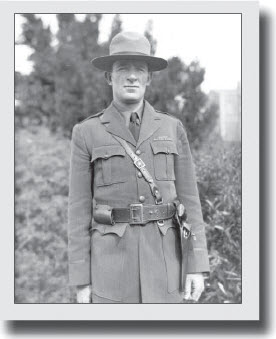
Deputy Warden Jay Manning
1939. California becomes the first state to employ full-time wildlife disease investigation personnel.
1940. Marine patrol cruisers of the Division of Fish and Game are equipped with radio telephone sets for ship-to-ship communications. A constitutional amendment provides for six-year staggered terms for the commissioners and makes their appointments by the governor subject to confirmation by the Senate. These changes lessened the control by any one governor of the commission
1942. LaRue F. Chappell appointed Acting Chief of Patrol while E.L. Macaulay was on Military Leave.
1945. The Legislature, through a constitutional amendment, delegates to the Fish and Game Commission the responsibility for making regulations for sport fishing and hunting . . . The State Water Resources Act declares the preservation and development of fish and wildlife resources a beneficial use of water.
1947. Fish and Game Warden Walter Krukow was shot and killed in Shasta County, by a juvenile whom he had reprimanded for a minor violation of the fishing laws. The youth was later apprehended and sent to a juvenile detention center. This was the first death of a warden in 17 years.
1948. Warden Karl Lund died of unknown causes in his patrol vehicle near Napa on June 14th. On October 28th, Captain Arthur Stager died on duty as a result of drowning in Fall River near Glenburn in Shasta County. DFG conducts the first aerial planting of trout in the mountain areas of California. Aerial planting is done by Fish and Game Warden Pilots.
1949. The Bureau of Patrol had 194 enforcement personnel. Legislation is passed establishing the first pheasant cooperative hunting areas . . . The Dickey Water Pollution Act provides for a state system for control of water pollution and maintenance of water quality– an act of major significance
in protection of fish and wildlife resources as well as public health.
1950. Captain Fred W. Hecker died from a fall from a cliff between Avila and Morro Bay in San Luis Obispo County.
The Dingell-Johnson Act for fish restoration and management is passed by Congress as a counterpart to the Pittman-Robertson Act. The D-J program is financed by taxes on sport fishing tackle.
|
Wardens checking some Elk in 1950 Here is a photo from a rancher family in the Williams area, which is where the picture allegedly originated. Anybody out there recognize the Wardens. According to the message that I have received from Warden Gil Berg is that the warden on the left in the dark shirt is Ed Hughes and the warden on the right is Gene Durney. |
1951. The Division of Fish and Game is reorganized and named the Department of Fish and Game with the Bureau of Patrol being renamed the Wildlife Protection Branch. The patrol boat Bonito, a 63-foot air-sea rescue vessel was added to the marine patrol fleet. Seth Gordon appointed DFG director. E.L. Macaulay appointed as Chief of Patrol upon his return from military service.
| Badges were updated when the Division of Fish and Game became the Department of Fish and Game. New badges issued starting in 1952. | |
|
Game Warden Badge |
Deputy Warden Badge |
1952. Patrol cars were equipped with two-way radios. A new sportfishing license is now required for any citizen to fish in the waters of the Pacific Ocean. The Department of Fish and Game organizational structure is revamped, creating a line-and-staff system with five regional offices (Redding, Sacramento, San Francisco, Fresno and Los Angeles). At the same time, the Bureaus of Game Conservation, Inland Fisheries, Patrol, and Marine Research became full branches of the department.
1953. Headquarters of the Department of Fish and Game moves from San Francisco to Sacramento . . . The Legislature establishes a Hunter Safety Training Program, requiring persons under 16 to obtain a certificate of competence with firearms (four hours instruction) before issuance of a hunting license . . . The first regional managers are employed by the department.
1954.
Warden Jack Burges checking a spike buck.
1955. Wardens Lend a Hand in Flood Emergency
Department of Fish and Game field personnel rescued approximately 100 persons from immediate danger of drowning during the floods of 1955 and assisted in the evacuation of hundreds of others.
But their greatest over-all contribution in averting further disaster was the fact that in many areas, including Yuba City and Klamath, Fish and Game wardens provided the only communication with the outside world for a period of several days during the height of the emergency.
At Yuba City Wardens Ross Waggoner of Yuba City and Edward Dennett of Wheatland foresaw the possibility of an emergency and when the floods struck, had set up an emergency radio communication system. Dennett gave the first warning of the Shanghai Bend break, and Waggoner relayed the warning to the sheriff’s office. Robert Paillaix, Yuba City levee commissioner, credits them with preventing a staggering loss of life.
Crews under the direction of Patrol Captain Don Davison of Paradise, and Assistant Game Manager Albert Naylor of Gray Lodge, Butte County, rescued approximately 50 persons in the Yuba City area. Warden Jack Ferges of Roseville warned of the Nicolaus levee break, assisted in rescue and evacuation work, and maintained continuous radio communications.
In the stricken town of Klamath, Del Norte County, Wardens Otis Wright and Ralph Schlitzkus were the first law enforcement personnel in the area, and had the only radio contact with the sheriff’s office.
In the Eel River Valley Wardens Lyle Null, Robert Perkins and Larry Werder rescued 16 persons and assisted in the evacuation of the town of Weott, brought in medical supplies and food, maintained radio communications and patrolled evacuated areas against looting.
Warden Jack McKerlie of Pt. Arena directed a dangerous rescue of 17 persons, including 15 children, cut off and in danger of drowning in the raging Gualala River. McKerlie for two days maintained the only communications into Pt. Arena.
In the Fernbridge area of Humboldt County Warden Robert Burge was the first rescue party to reach the area, and in addition helped evacuate the town of Orick. Warden Anderson Smith acted as rescue coordinator in Hayfork, Trinity County, for 24 straight hours, and had the only communication with outside. In Scott Valley Warden Robert Fraser maintained the only communication, and assisted in several rescues.
Warden Forrest McDermott served continuously for five days in the Santa Cruz emergency, and at one time had the only communication in the entire county.
Wardens Davis, Owen and White, working as a team with cars and boats, rescued 40 persons in the Visalia area. Wardens Becas and Burnett rescued six people in the Lemon Cove area, and then Becas returned to his own flooded home and evacuated his family and several neighbors. Burnett for a time provided the only radio contact with the Tulare County sheriff’s office.
Scores of other fish and game people assisted in levee patrol, radio communication, patrol against looting, and directing rescue.
In none of the cases were the Fish and Game men ordered to this duty, the men accepting responsibility voluntarily. Fish and Game boats and radios and other equipment in many cases were on the scene before actual flooding took place and their use helped prevent damage and loss of life.
At least 75 department men contributed efforts far beyond the normal call of duty during this emergency period.
E.L.Macaulay retired as Chief of Patrol after 26 years of service to the Department.
A new patrol uniform is introduced. Below is a photo of Warden E.C. Fullerton who would later become the Chief of Patrol, and ultimately the Director of The Department of Fish and Game.
Click on the photo to bring up a larger version
Region 2 WLP Photo Set thanks to Retired Lt. Bruce Cochran.
RESERVE WARDEN PROGRAM
The number of reserve wardens in Southern California and the Sacramento Valley declined by 25 percent during the biennium. Raising of the requirements for qualification to compete in civil service examinations for the position of State Fish and Game Warden contributed to a degree to the drop in veteran reserves and potential replacements, since the requirements ruled out many of those who hoped to gain a civil service appointment. Despite this attrition, activation of three new reserve units in Central California enabled the force to maintain its strength.
Reserve wardens fill a distinct need in buttressing the work of the Wildlife Protection Branch. This is particularly true of certain critical periods such as opening days of various seasons and heavily pressured week ends, when the regular wardens need help. Applicants desiring a commission as a reserve warden must attend weekly training classes for 10 weeks and pass an examination before gaining an appointment. Receiving neither salary nor expenses, they team up on their tours of duty with regular wardens. Failure to conduct himself with consideration, courtesy and helpfulness toward the public is justification for immediate dismissal of a reserve from the program.
Tours of Duty
By terms of their appointments, reserve wardens are required to perform one tour of duty a month. Generally this service is conducted on a week end, although many reserves generously donate time far in excess of requirements. Consideration of the personal expense borne by each reserve warden leads to the conclusion that the ranks are filled only with men who are genuinely interested in the welfare of California’s fish and game. At the close of the biennium 11 reserve Warden units, comprising 242 men, were active within the State. Units were located at Sacramento, Stockton, San Francisco, Fresno, Sonora, Tulare, Merced, Bakersfield, Los Angeles, Terminal Island (marine) and San Diego.
1956. After much effort, the Law Enforcement unit will be getting 30 new Warden positions and 9 new Captain positions. That will result in a total force of 253 of which 213 are Wardens and the remainder are Captains and upper level managers. The warden complement was increased 13 percent, when in October, 1956, 25 new men were assigned to the force. Before taking over duties in their respective districts, these men attended a comprehensive and intensive two-week departmental training program held at Strawberry Lodge in El Dorado County. Indoctrination and orientation sessions were held, as well as classes covering patrol practices, court procedures, law interpretation, rules of evidence and arrest, and laws governing search and seizure. Experience has shown the lessons learned in these schools of instruction are invaluable to both the wardens and the department. While informal pistol shoots among wardens were held for many years, a pistol marksmanship training program was formally initiated.
Reserve Wardens
Units of reserve wardens contributed thousands of hours of their time and performed invaluable service in enforcement work during the biennium. Working with department wardens, the unpaid reserves enabled regular patrols to cover greater areas and resulted in a more thorough check of hunters and anglers. In many areas where it was suspected that violations were occurring, reserve wardens were assigned to out of uniform patrol and surveillance, and succeeded in bringing a number of violators to justice. These men also devoted many additional hours to the hunter safety training program, conducting classes for junior hunters and teaching them the proper use of firearms by practical instruction on rifle ranges. With the addition of a new class of reserves in the San Francisco Bay area during the latter part of the biennium, the department now has a reserve force of approximately 277 men.
AIR PATROL
Law enforcement activities were assisted and made more effective by use of the department’s aircraft, particularly the two light Cessnas. Operating out of the Sacramento airport, the Cessna 180 was used in the northern half of the state in coordinated air-land patrols. During the fall salmon runs, air patrol provided rapid, effective coverage of spawning beds on many miles of salmon streams and resulted in numerous arrests of violators taking fish in closed areas and by unlawful methods.
With a warden-pilot observer aloft to direct ground forces, this salmon patrol technique has proven highly successful and has undoubtedly saved hundreds of spawning fish. Stationed at San Bernardino, the Cessna 170 is used for patrol in the southern part of California, particularly to check activity in remote desert areas where access by motor vehicle is time-consuming and difficult. Both planes are used to locate isolated hunting and fishing camps immediately prior to fishing or hunting season openings, for often these early, remote camps are sources of various violations.
New wardens, or wardens assigned to a new district, utilize the aircraft to familiarize themselves with the overall terrain of their jurisdiction. Many wardens, having been in an area several years, find aerial observation invaluable in locating new access roads, camps and other minute details not readily observed from the ground. Shortly before the opening of the 1958 commercial salmon season, news releases reported the Wildlife Protection Branch intended to establish an aerial patrol of northern ocean waters to prevent fishermen from “jumping the gun.” The subsequent offshore patrol by the twin-engine Beechcraft indicated the effectiveness of the warning, for although many boats were on the fishing grounds early, none were engaged in the preseason fishing activity which was reported to have prevailed during previous years.
Use of the airplanes by wildlife protection personnel was restricted by demands upon the aircraft by other functions. During the 1956-57 Fiscal Year, 30.26 percent of the total hours flown by the Cessna 180 was for patrol activities. For the period 1957-58 the percentage dropped to 28.6. During 1956-57, 32 percent of the flight time for the Cessna 170 was for patrol, increasing to 35.2 in 1957-58. The twin-engine Beechcraft, less adapted to patrol activities, charged only 5.04 percent of its flight time to wildlife protection in the first half of the biennium and 8.3 percent during the second half.
1957. Radiation Detection… In co-operation with the statewide Civil Defense program, the Wildlife Protection Branch was assigned the responsibility of radiation fallout detection which would be required in the event of any atomic explosion.
The Fish and Game Warden’s Handbook was revised and issued to all Wildlife Protection Branch members. The manual had previously been revised in 1926. The Marine Resources Region is created with headquarters at Terminal Island, San Pedro.
Marine Wardens checking nets in 1957-58
1958. The Wildlife Protection Branch has been assigned the primary responsibility of checking water releases from dams and water diversions throughout California.
1959. On April 3rd, Warden Clarence L. Brown died in an automobile accident while on night patrol in Fresno County. California Fish and Game Wardens are granted full Peace Officer status.
William E. Warne appointed DFG director.
|
Warden Class of 1959 |
|
Patrol car driven by Warden Brown, after the crash, |
1960. The first motorcycle/trail bikes are purchased for enforcement use by the Fish and Game Wardens. A new law on streambed alterations is enacted by the California Legislature, requiring notification be made to DFG when changes are to be made to any waterway within the state. Walter T. Shannon appointed DFG director.
|
Bishop Warden Squad 1960 |
1961. The Department of Fish and Game becomes a component of the new Resources Agency of California. Jet boats are used for the first time in the state’s river systems. The California State Legislature enacts the anti-litter law and made it part of the Fish and Game Code.
1962. The first cooperative plans with military bases in California are signed (at Beale Air Force Base and China Lake Naval Weapons Center) to provide for management of the wildlife resources and for public participation in the use of fish and game resources.
|
Region 4 Squad Meeting Photo from 1962 |
1964. Captain Ned Dollahite named Inspector for the Southern California Land Region. After spending 3 years in Sacramento as the training officer for the law enforcement branch, Inspector Dollahite will return to a field command position.
1965. The California Fish and Wildlife Plan, started in 1964, is completed on schedule. This was the first statewide master plan for fish and wildlife in the United States . . . The Land and Water Conservation Fund Act is passed by Congress. Revenues collected through taxes on motorboat fuels, federal recreation user fees, and sale of surplus federal property are apportioned to the states for recreation. The Wildlife Conservation Board is a major participant in this program and is able to acquire substantial acreage of prime wildlife habitat for preservation and public use. Land and water funds allocated to the board are also used to augment WCB funds on a matching basis for development of hunting and fishing access projects, fishing piers, etc.
1966. The Department hired a large class of new wardens. They have reported to the Riverside Sheriff’s Academy for training.
|
Warden Class of 1966 |
1967. The legislature removes the bounty on mountain lions.

Successful day at work. A few guns and some pheasants seized for evidence in the Sacramento Valley in 1967. Orland Warden Wally Callan, USFW Agent Bob Norris (Chico), Corning Warden Harold Erwick
1968. The commission authorizes the department to proceed with plans for a warm water hatchery capable of producing 500,000 catfish annually . . . Legislature passes the Protected Waterways Act, which declares it is state policy to “conserve waterways possessed of extraordinary scenic, fishery, wildlife, and outdoor recreation values. The Department of Fish and Game was named to direct the study.
1969. Warden Russell M Bushy, Jr. died on July 1st from drowning when he fell into the Fall River while preparing his skiff for patrol. The mountain lion is designated as a game animal by the Legislature. G. Raymond Arnett appointed DFG director. Thanks to Retired Warden Nick
Albert for the roster. Check out the 1969 Warden Roster. I was surprised to see that it had been published in the Outdoor Cal.
1970. Warden Paul S. Smith died on December 19th while SCUBA diving off the shore at Pt. Mendocino.
Inspector Ned Dollahite, Long Beach has transferred to the Redding office to replace Inspector Les Lahr who retired this year. The year marked the 100th anniversary of fish and wildlife conservation in California. The Endangered Species Act required the department to inventory California’s threatened fish and wildlife, develop criteria for rare and endangered species and report biennially to the governor and Legislature on the status of these animals.
1971. Ten California bighorn sheep were transplanted successfully from British Columbia to the Lava Beds National Monument in Siskiyou County. The bighorn had disappeared from the area 61 years before
. . . The Fish and Game Commission declared 43 animals to be endangered or rare
. . . Initial results of a mountain lion study indicated there were at least three times as many in the state as previously believed.
1971 Letter Regarding Warden Ray Azbill from Assemblyman Bob Wood
1972. The Fish and Game Commission designated 345 miles of waters in 17 streams as the nucleus of the new Wild Trout Program
…. 1,060 sea otters were counted, the highest number since the annual census was first undertaken
. . .A record 62,038 persons received hunter safety and wildlife conservation instruction during 1972.
DFG placed 8 new game wardens into the Riverside County Sheriff’s Academy. The class graduated on November 17, 1972. The following were the new wardens: Roger Laughlin, Revis DeWayne Johnston, Gerald Erwin, Michael Herlache, John Mendoza, John Dodds, Will Bishop & Robert Jones.
Riverside County Sheriff’s Academy Class (with 6 wardens)
Wildlife Protection Officers in Region 5 in 1972
1973. The reserve fish and game program was terminated on August 31, 1973.
1974. DFG issued weapons, leather, handcuffs and mace to its Fish and Game Wardens. Pyramid and Perris reservoirs of the State Water Project were opened to fishing with the Perris opening drawing 10,000 anglers.
1975. E.C. Fullerton appointed DFG director.
According to Chief of Patrol Bernie Faist, several years of effort have finally paid off. The Department of Personnel Administration has authorized the Department of Fish and Game to create a Lieutenant classification. It will be the new first line supervisory position, between the
wardens and captains. The captains duties will change as well, to more of a management position, rather than being a first line supervisor. No new positions were authorized, so DFG will convert approximately 15-22 Captain positions to Lieutenant and 20-30 Warden positions to Lieutenant. Warden districts will be larger because of the conversion of those positions.
Can you name these brand new Lieutenants? Here are my guesses: Standing tall in the very back row is Don Harn, Back Row, L-R: Al Giddings, ?, Bill McFarland, George Ritchie, ?, Bob Rufenacht, Artie Brown, ?, Frank Schutz, ?, Greg Laret, ?, Ralph Labrum, John McClain, Rich Macedo, ?.
Front Row, L-R: Ken Nilsson, ?, ?, ?, Gill Berg, Genn Moor, Weldon Sanford, Rich Colby, Doug Buchanan, Roy Pedersen.
New Lieutenants for Region 2 (1/8/1975)
L-R: Don McCoskey, Artie Brown, Gil Berg, Frank James, Roy Petersen, Jack Schmidt
Recent amendments to the Forest Practices Rules gave the department, for the first time, a meaningful role in reviewing proposed timber harvesting operations on private lands. ‘The DFG estimated it will review from 2,000 to 4,000 such plans each year.
Region 2 Supervisors 1/8/1975
1976. Check out this 1976 Roster for the San Joaquin Valley area’s Region 4 out of Fresno. Document provided by Ray Skochko, son of Capt Ray Skochko who retired from his position in Fresno in 1981.
Check out the photo below from 1975-76 for the Region 5 Wardens, thanks to Ron Perrault.
1977. Bernie Faist, Chief of Patrol, announced the hiring of several new wardens as they head off for training to the Riverside County Sheriff’s Academy. Not included in the photo were officers that transferred to field positions without going back to the academy. Warden John
Slaughter transferred from the CHP to fill the vacant Riverside position and Miles Young who transferred from San Francisco Police Department to fill the position as the boarding officer on the patrol boat “Minnow” in the East Bay.
|
Warden Class of 1977 |
An innovative program of night aircraft surveillance for deer spotliters was carried using a twin-engine aircraft. It flew a total of 18 nights during which 56 separate spotlighting vehicles were observed.
The second year of the worst recorded drought in California history had a profound effect on DFG’s activities. As streams began drying up in late summer, the DFG moved to rescue several threatened fish populations.
1978. Wardens were cross-deputized for enforcement of federal rules regarding Indian fishing and worked diligently to halt the sale of illegally caught salmon and to seize illegal fish, arrest poachers and move against markets purchasing the fish. A moratorium on salmon fishing in the river and restrictions on other fishing in the drainage, instituted August 26 and lifted six weeks later, resulted in difficult problems for the DFG in law enforcement and public information. Point St. George Fisheries Company of Santa Rosa settled out of court on illegal commercial fishing charges. Point St. George Fisheries paid $25,068.04 in costs and back taxes.
1979. The first full time female game warden to be hired by the Department of Fish and Game was Karen Longmore. Her hiring was followed shortly thereafter by the hiring of Melissa Sheppard. There was at least one female special deputy appointed by the Fish and Game Commission in 1927. You can learn a little more about her and the special deputies if you check the entry for 1927.
Warden Jean K. Jones of Concord was shot while on patrol in near McAvoy Harbor, Pittsburg, in Alameda County and died a few hours later, the first death of a warden at the hands of another person while on patrol in 32 years. A juvenile was apprehended and found guilty of the crime.
On October 27th, Warden Leon H. Nelson died in an automobile accident while on patrol in Glenn County.
State and federal officers seized a total of 50 tons of illegally caught Klamath River salmon, and during a single three-week period confiscated 16 tons of poached salmon. CalTIP is inaugurated in September of this year with the first ten weeks producing more than 300 calls and 67 arrests. A helicopter was used for the first time for enforcement work in California.
Desert Rats in So Cal in 1979. Back Row: Lt. Steve Callan, Warden Reggie Zavalla, Warden Dave Szody. Front Row: Captain Jim Reynolds, Captain Tom Harrison, Warden Jim Worthington, Warden Dave Blake
1980. Dale Wong, the first Asian warden was hired. He came to the Department from the California State Police.
1981. Lt. Robert A. Flynt died in an automobile accident on May 11th in El Centro.
Which wardens were working which districts in 1981?
Check out the radio call cards from 1981
1981_HQS
1981_R1
1981_R2
1981_R3
1981_R4
1981_R5
1981_R6
1982.
1983. Don Carper appointed DFG director replacing long time fish and gamer, E.C. “Charlie” Fullerton. Chief of Patrol Ned Dollahite promoted to Regional Manager, Region 1.
1984. Captain DeWayne Johnston, Menlo Park, Region 3, named Chief of Patrol. Jack C. Parnell appointed DFG director. Lt. Roy Reed died in an automobile accident on June 7th near Bakersfield while in pursuit of another vehicle. Conservation Education implements Project Wild, the DFG’s wildlife education program. Project Wild consists of no cost instructional workshops for educators working with students in grades K-12. Hunter Education program is now in its 30th year. The first $1,000 CalTIP reward is authorized.
Which wardens were working which districts in 1984?
Check out the radio call cards from 1984.
1984_HQS
1984_R1
1984_R2
1984_R3
1984_R4
1984_R5
1984_R6
1984_Reserves
Letter to Ray Azbill from Retired Lt. Col Charles Peckham
1985. The first Field Training Program (FTO) is inaugurated.
1986. A fish and game check station is operated in conjunction with the Truckee Agricultural Inspection Facility. Nineteen wildlife officers from California, Colorado, Utah and the U.S. Fish and Wildlife Service conduct a continuous check of fish and wildlife being imported into California from August 17 through 19. They inspect 6,931 pounds of fish and game being transported into California, resulting in 64 arrests for illegal possession of fish and wildlife. First report of northern pike in California in Frenchman Reservoir in Plumas County.
1986 Letter from Director Jack Parnell to Warden Ray Azbill
1987. Pete Bontadelli appointed DFG director. A new pilot program is initiated at Napa College to further the Fish and Game Warden training program with seven cadets. The existence of northern pike in Plumas County’s Frenchman Reservoir is documented.
1988. The Broadbill, headquartered in Eureka and the Hammerhead, headquartered in Long Beach are added. The Wildlife Protection Branch launches the Special Operating Unit (SOU) to combat the illegal commercial take of wildlife. Which wardens were working which districts in 1988?
Check out the radio call cards from 1988.
1988_HQS
1988_R1
1988_R2
1988_R3
1988_R4
1988_R5
1988_R5 Page 2
1988_Reserves
1989. Graduation on June 16 of the first class of warden cadets from the new DFG Resource Academy. DFG confirms northern pike in Frenchman’s Reservoir. Enforcement personnel implement a public highway check point program after review and approval of the DFG’s written checkpoint policy and procedures by the Attorney General’s Office. The majority of those stopped expressed support and many say DFG should have started this program long ago.
1990 Eastern Sierra Squad
Photo was taken during squad training at the Bishop Gun Club.
Back row – left to right
Wdn. Tom Lipp Independence, Lt. Mike Wolter Bishop, Capt. Ken Brown Bishop, Lt. Tim Sawyer, Wdn. Pat Mclernon Lone Pine, Wdn. Dick Padgett Walker, Wdn. Dick Phillips Wrightwood, Wdn. Rick Cohelo Big bear
Front row – left to right
Wdn. Pat Woods Bishop, Wdn. Marion Henry Barstow , Wdn. Dave Fox June Lake, Wdn. John Ortmann Bishop, Wdn. Greg Orr Yucca Valley, Wdn. Eric Wang Mammoth Lakes
1991. The Office of Oil Spill Prevention and Response (OSPR) formally opens on January 1. DFG’s responsibilities in matters related to oil spill prevention and response in marine waters greatly expand. Frenchman Reservoir is chemically treated to eradicate northern pike. On July 14, several Southern Pacific train cars derail while crossing the Sacramento River on the Cantara Loop bridge near Dunsmuir. A tank car containing metam-sodium solution falls into the river spilling at least 19,000 gallons of the chemical. The severe toxicity of metam-sodium kills
nearly all plant and animal life between the Cantara Loop and Shasta Lake, 42 miles downstream. Toxic gasses also harm vegetation and aquatic life more than two miles upstream from the spill site.
DFG also had a range master school this year. Can you name the wardens in this photo?
1992. Boyd Gibbons appointed DFG director. Former Warden Greg W. Cook died in a helicopter accident while working as a biologist investigating an oil spill in the Sacramento River near Carquinez on January 11th. The Delta Bay Enforcement Enhancement Program is established within the Wildlife Protection Branch. Northern pike are found in streams near Frenchman Reservoir and the streams are chemically treated, killing approximately 3,000 pike.
1993. In the summer of 1993, CalTIPS’s phone-in hotline begins staffing 24 hours a day. Regional Patrol Chief, Rich Elliott, promoted to Regional Manager, Norther Region in Redding.
1994. The DFG has its first documented fatal mountain lion attack; in April an adult female mountain lion attacked and killed a female runner in the Auburn State Recreation Area. DNA sampling conclusively prove the lion tracked and killed is responsible for the attack. A second fatal incident occurs in December. A male mountain lion attacks a female bird-watcher while she was on a hike in Cuyamaca Ranch State Park. The DFG legal team extracts a final settlement of $38,000,000 from the Southern Pacific Railroad for the July 1991 metam-sodium spill into the Upper Sacramento River near Dunsmuir. Documentation of northern pike in Lake Davis, Plumas County occurs.
1995. Two-rod fishing for those who purchased the new stamp becomes legal on January 1. The new law authorizes anglers to buy a two-rod stamp so they can use two rods simultaneously while fishing on inland lakes and reservoirs. Chuck Raysbrook appointed Interim DFG director.
1996. Jacqueline E. Schaefer first female appointed DFG director.
A mountain lion is shot and killed by a game warden shortly after daybreak January 16, as the animal charges another warden at the same location on the trail where an equestrian reported encountering the animal in the afternoon of January 15. Both wardens and a tracker had been
investigating the earlier incident when the lion appeared. A three-year study of wild pig tag returns finds that wild pigs are second only to deer in popularity with California big game hunters.
Wild pigs are now being harvested in 45 of the state’s 58 counties. The top five counties are Monterey, Sonoma, Santa Clara, Mendocino and San Luis Obispo.
An eight-year-old boy camping at Singing Pines Camp on the east side of the Angeles National Forest is mauled by a bear the morning of July 10. After emergency treatment, he is taken to a Los Angeles hospital where he was listed in stable condition. The bear is tracked by DFG wardens aided by a professional tracker. After confirmation that the bear matched the evidence profile, it is killed with a single rifle shot. DFG officers and a professional tracker with dogs tracked and killed a mountain lion September 16 in the Auburn State Recreation Area after the lion is determined to be a public threat. Evidence at the scene support a male cyclist’s account of being pursued by a mountain lion the morning of the 15th.
1997. The Department’s Conservation Education and Public Affairs Office is moved to the Wildlife Protection Division, Deputy Chief of Patrol, Jack Edwards is named Chief of the Conservation Education and Public Affairs Office. Lake Davis in Plumas County is chemically treated in an attempt to eradicate northern pike.
1998. Chief of Patrol, DeWayne Johnston promotes to Regional Manager, Marine Region. Regional Chief, Richard Elliott, named Chief of Patrol in August. The DFG Wildlife Forensics Laboratory (WFL), now under the authority of the Wildlife Protection Division, reaches a pinnacle with their DNA Test Development Project. The WFL is at this time considered the best in the world at using DNA testing for identification and sex determination of individual mule deer from blood stains, tissue samples and hair samples. The WFL data base library consists of nearly 5,000 individual California deer tissue samples from throughout the state.
1999. The name of the Wildlife Protection Branch is changed to the Enforcement Program. Northern pike again found in Lake Davis, Plumas County. This is the first year for the measure that substantially increases the fine from $1,000 to $50,000 for any person responsible for placing non-indigenous aquatic nuisance species into California waters. Robert Hight appointed
DFG director.
|
Sesquicentennial Badge |
2001. Chief of Patrol, Rich Elliott, retired in June. Assistant Chief, Greg Laret, named Chief of Patrol.
2003. Regional Chief, Tom Pedersen, named Chief of Patrol upon the retirement of Chief Greg Laret. The strength of the Enforcement Program stands at 404 officers.
2003. Deputy Chief of Patrol, Jack A Edwards, retired from DFG. An Academy class began in February.
2004. Ryan Broddrick named Director of DFG. Ryan is the first director to come from the enforcement branch since Charlie Fullerton.
2005. Nancy Foley named Chief of Patrol of the Enforcement Program.
Warden Kyle Kroll was wounded on August 5th during a raid on a marijuana growing operation on Sierra Azul Mid-Peninsula Open space property in Santa Clara County.
2006. Under the authority of Director Ryan Broddrick, the Law Enforcement Program was upgraded to Division status to beheaded by a Deputy Director level position. Chief of Patrol, Nancy Foley, named Deputy Director, Law Enforcement Division, Department of Fish and Game.
2007. Ryan Broddrick resigned from the Department and John McCamman named acting Director of DFG.
One of our own being written up in their college newsletter.(Sac State Spring 2007)

2008. Warden Academy to be moved to Butte College in Butte County. Don Koch named Director of DFG.
2010. Director Don Koch retired from the Department. John McCamman named Director of DFG.
2011. Charlton “Chuck” Bonham named Director of DFG.
|
North Coast District Supervisors at Annual Training Meeting at Fort Ross in 2011
|
|
Back Row: Lt Jon Willcox, Lt. Paul Gaske, Lt. Dennis McKiver, Capt Wayne Kidwell
Middle Row: Lt. Loren Freeman, Lt. Sheree Christensen, Capt Steve Riske, Lt. Todd Ajari, Lt. Bob Farrell, Lt. Andy roberts, Lt. John Nores, Lt. Steve White Front Row: Capt Don Kelly, Lt. Dan Andreen, AC Doug Huckins, Lt. Mark Crossland, Lt. Todd Tognazzini, Lt. James Kasper (Absent is Lt. Bob Puccinelli) |
2012. Regional Chief, Mike Carion, appointed Chief of Patrol, Deputy Director, Law Enforcement Division by Director Chuck Bonham.
2013. On January 1st, the agency was renamed the Department of Fish and Wildlife.
2014. Warden Bob Pera was shot and wounded while on patrol in El Dorado County. The county is still investigating to determine if the shooting was accidental or not.
Chief of Patrol Mike Carion retired in December.
2015. Assistant Chief Dave Bess appointed Chief of Patrol, Deputy Director, Law Enforcement Division by Director Chuck Bonham.
————————————————————–
Retired Warden Captain Jim Zobel contributed to the compilation of the history. This document has been compiled from an original story in the DFG publication, Outdoor California, with additions from various sources including the Department of Fish and Game’s Bulletin and the Biennial Reports of the Fish and Game Commission. Some of the photos of warden badges were copied from “Insignia of the California Resources Agency, Fish and Game – Parks – Forestry”, by Michael G. Lynch, Douglas T. Messer and Steven D. Huntington.
* Etiquette in the early part of the 20th century required women be listed with their husband’s rather than own name, resulting in difficulties as seen here. Attempts to recover Mrs. Seller’s name were unsuccessful.

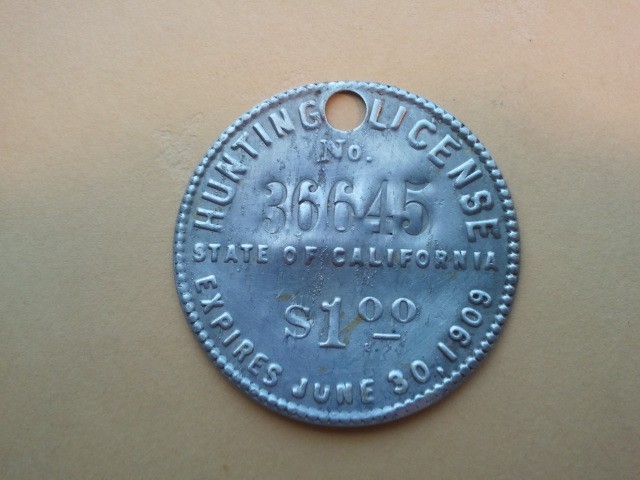
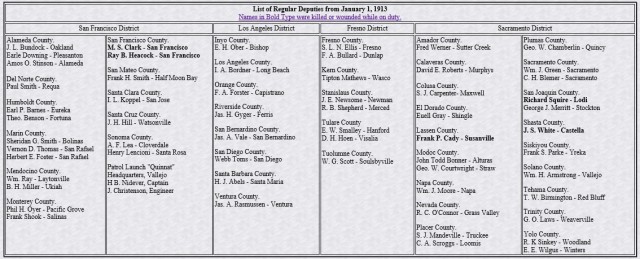
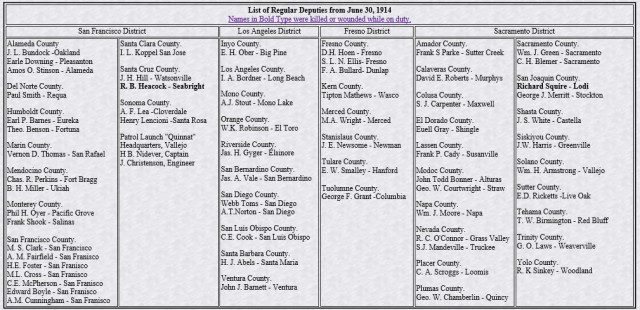
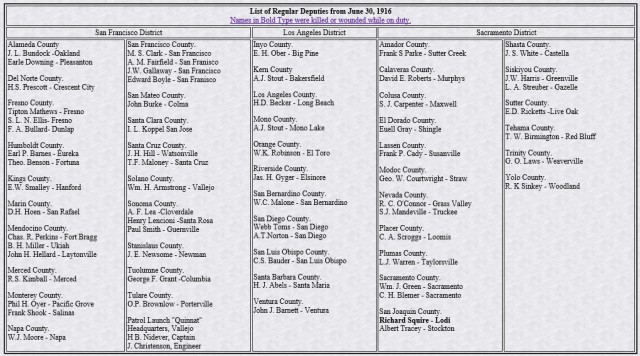
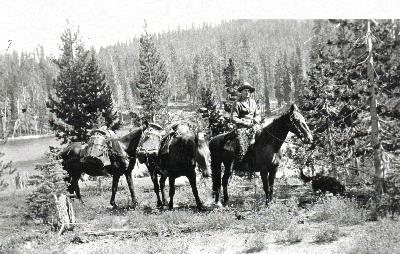
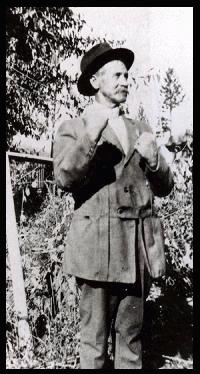

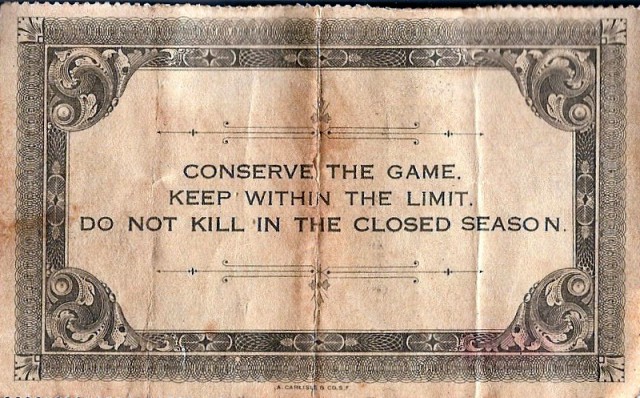
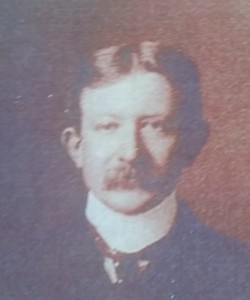





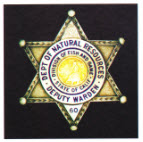
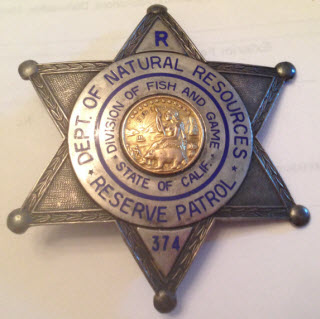
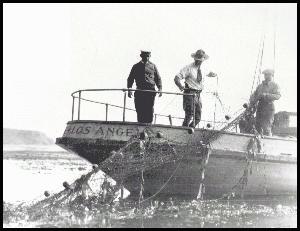
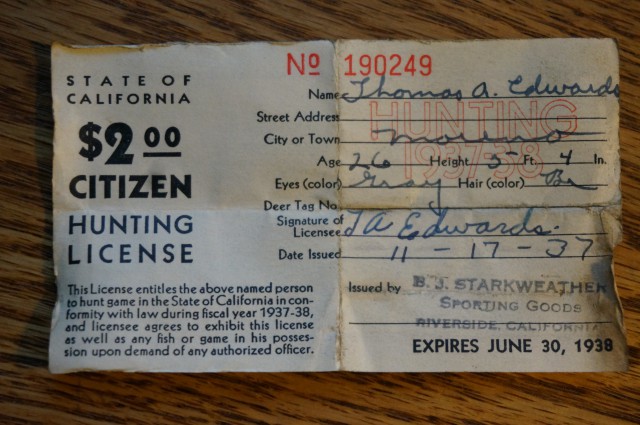

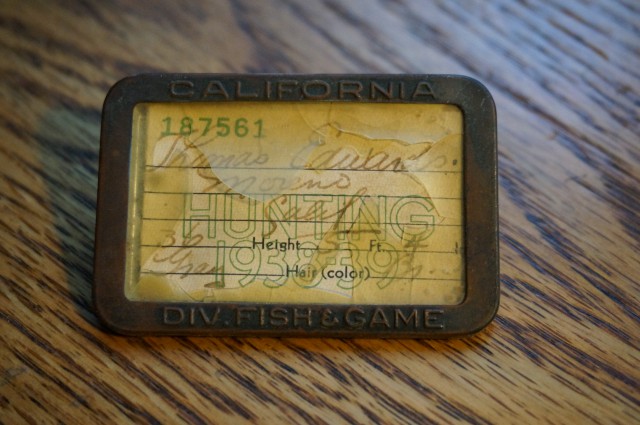
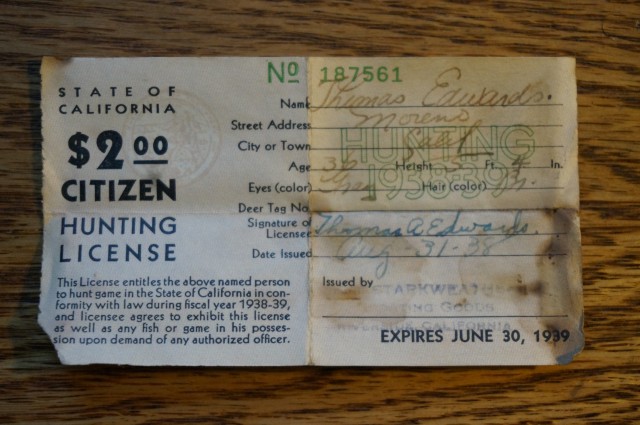
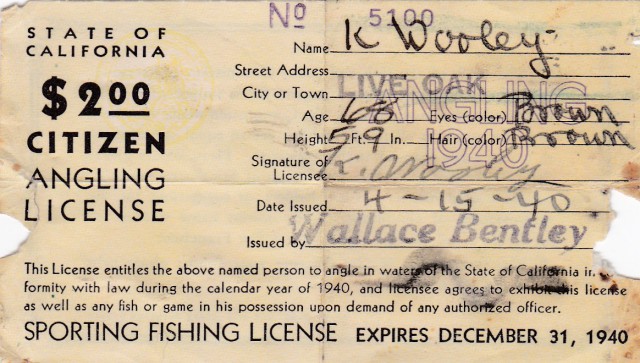


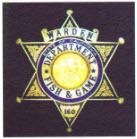
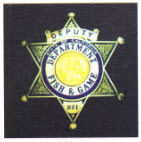

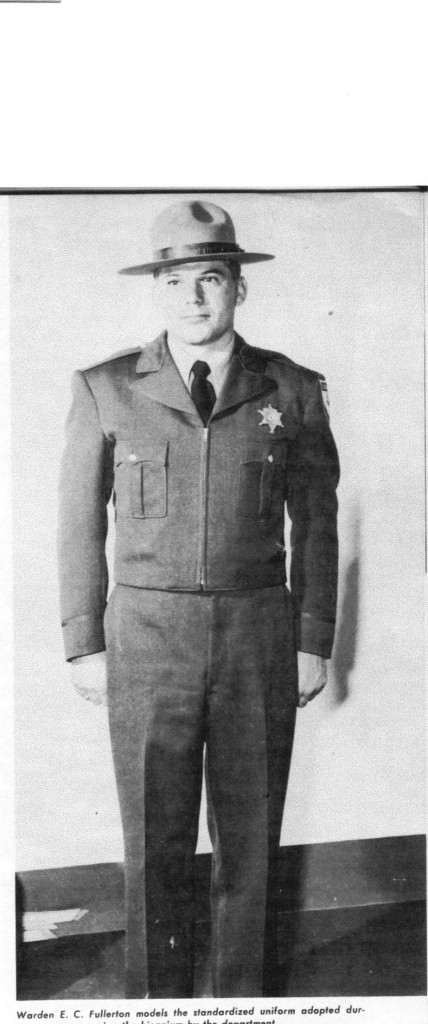
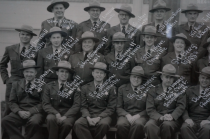
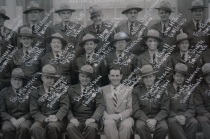
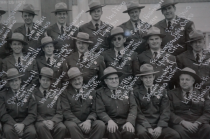

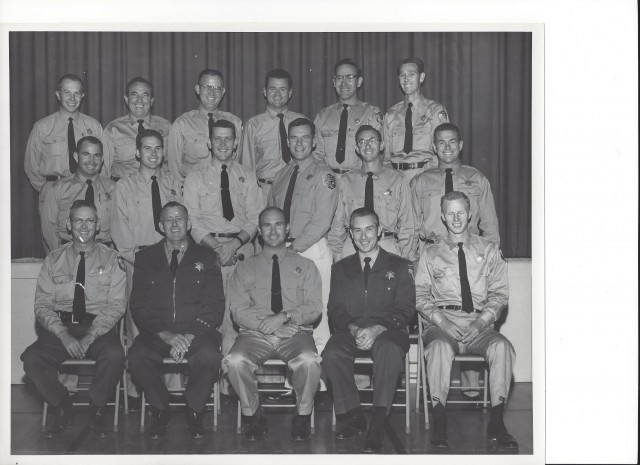



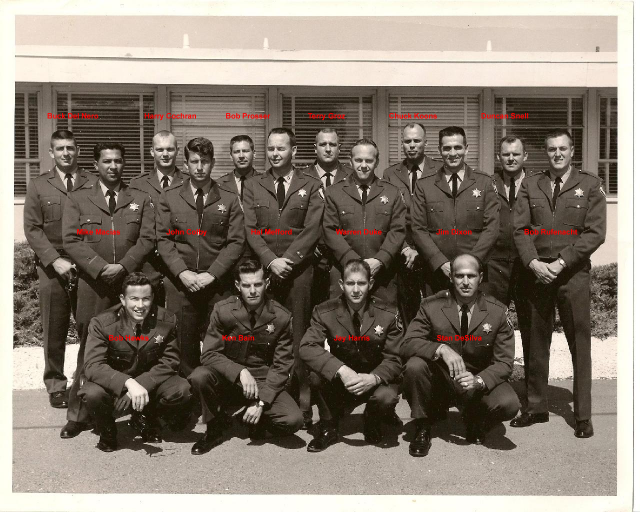
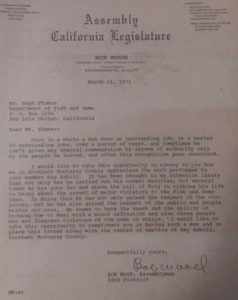
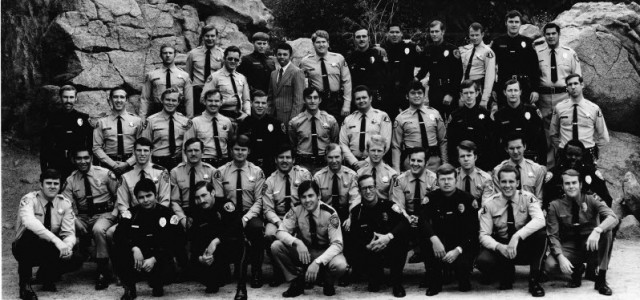
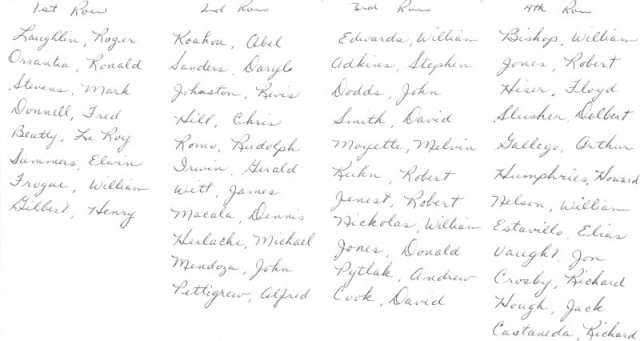
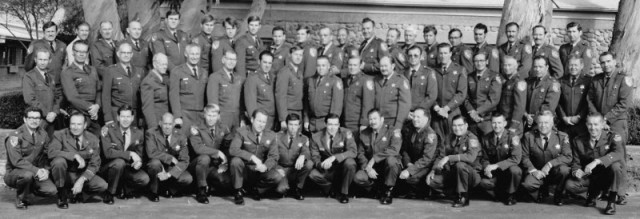
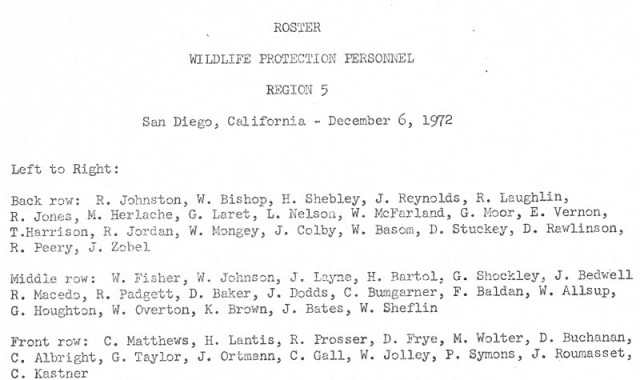

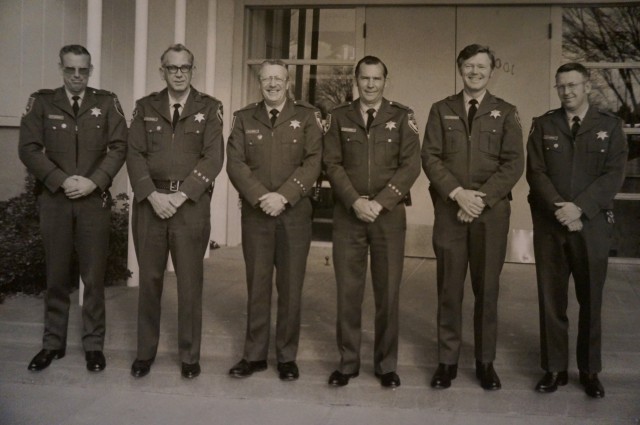
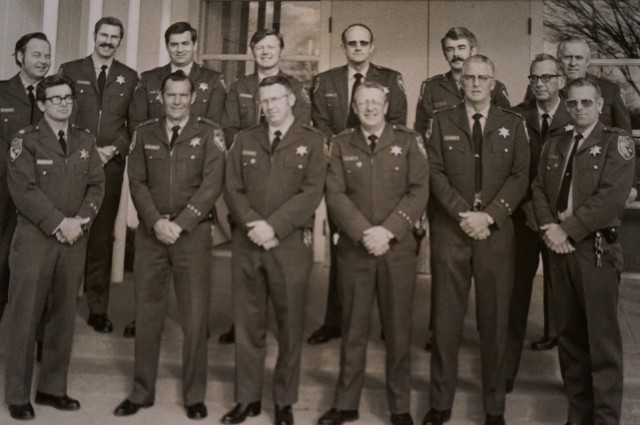
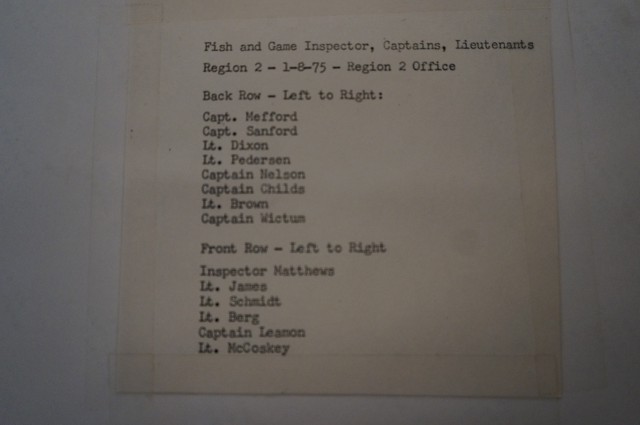
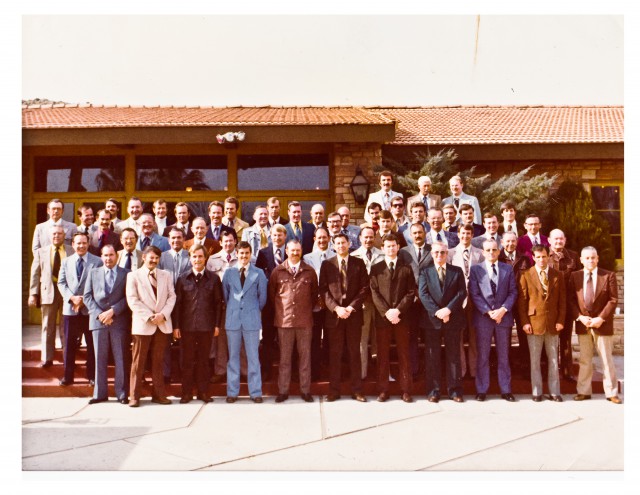
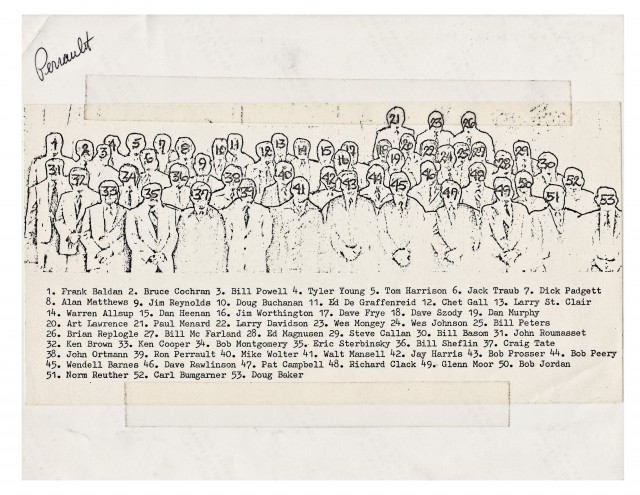
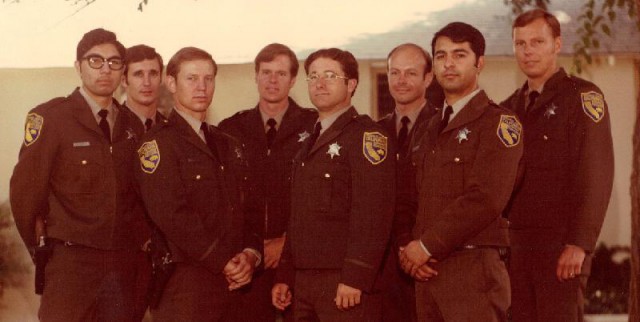

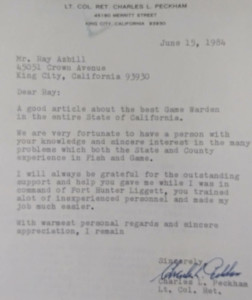
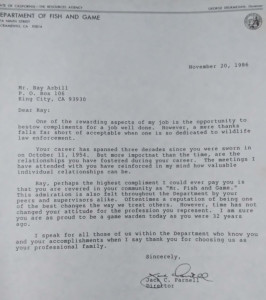

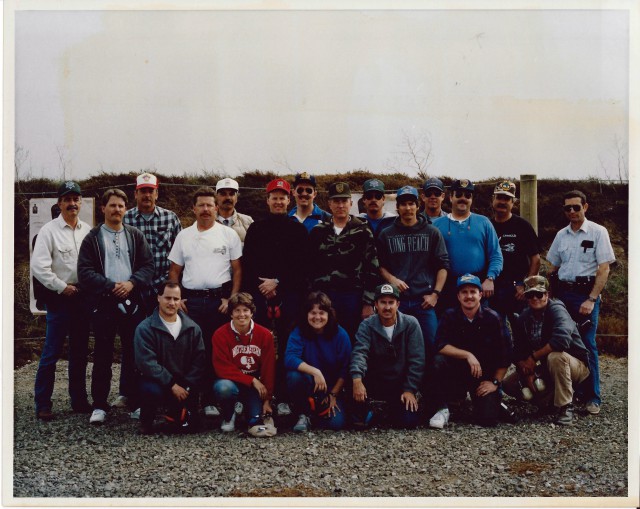

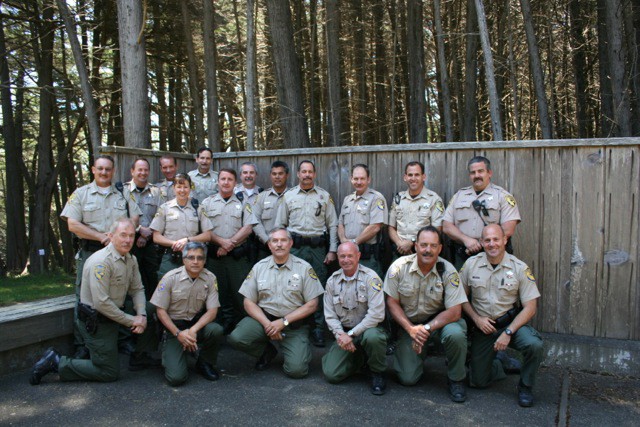
WHEN are the wardens going to get their NEW badges that will match their shoulder patches ??? I was cited by a resident warden (and found NOT guilty) in Mono county last year and he told me “they were in the mail, supposedly”. How much did it cost to change the wording on all that paperwork, the vehicles, patches, badges, the boats, EVERYTHING ??? Millions, I’d bet…
Rick: I have no idea when they are getting their new badges or how much the name change cost the state. Those are questions you need to ask the Department. This site is for retired game wardens to stay in touch.
Great job Jack, lots of work!
I flew a number of Helicopter patrols with San Bernardino SO resulting in a number of cites. I even made one Spotlight case in the Fontana/Upland area where we put the large spotlight on the hood of the offenders blinding the driver, we landed and I issued cites to the offenders.
This was in 1976-77 done with the full blessings of Insp. Jack Traub who was having me keep stats for a possible further use by the Department. We often flew Mt. Baldy and other very remote hard to get areas rapidly. Good memory’s………Warden Tyler Young also flew.
Picture of shooting instructors, me in camouflage sweatshirt, middle, second row. Riske kneeling, front and Caywood on end.
Ed
You have a photo missed labeled. Above the reserved warden program is a photo of a warden modeling the new uniform. That is Charlie Fullerton, it even says it on the bottom of the photo.
That was not a caption below the photo. It was the next point in the history that year. I moved it above the statement about the uniform identifying Charlie which is above the photo.
Jack